Source: AP
Posted: 05/21/08 6:26PM
Filed Under: Entertainment Other FOR FEEDS
Assistant curator John Johnston scaled steep cliffs for seven hours to reach a bronze sculpture of a Buddha at a small Himalayan monastery 13,000 feet above sea level. And where there was no trail, he and two companions grabbed trees to pull themselves up the mountain.
The gilt bronze figure is now one of the key pieces in "The Dragon's Gift: The Sacred Arts of Bhutan," a rare display of centuries-old sculptures and paintings that have never before left the remote, mountainous kingdom.
Even in Bhutan, the public rarely gets to see the rich collection of work now showing at the Honolulu Academy of Arts. The exhibit is due to travel to New York, San Francisco, Europe and possibly Singapore over the next two years.
Almost all the art is normally kept in active temples, monasteries and dzong - fortresslike buildings home to both monasteries and government offices. About a quarter of the items were gathered from far-flung monasteries and temples reachable only by hiking several hours from the nearest road.
"This is a compilation of the best Bhutan has," said Eddie Jose, the Academy's chief conservator for Asian paintings.
Bhutan, a country of some 700,000 sandwiched between China and India, is one of the most remote places in the world. Most people are Buddhist, and the government carefully aims to balance economic growth with spiritual well-being. The authorities control tourism by limiting the number of visas issued and by charging high mandatory rates - up to $220 a day - for visitors.
Some of the paintings had to be refurbished before the show because they were covered with tiny black spots where bugs had eaten through the animal skin glue. In some cases, rats ate chunks out of the scrolls' silk borders.
Jose revived the thangkas with the help of dozens of monks he trained. The Academy promised to spend 10 more years teaching Bhutanese monks conservation techniques in exchange for borrowing the art.
U.S. museums have hosted Bhutanese art before. The Peabody Essex Museum in Salem, Mass., organized a Bhutanese textile show in the mid-1990s, but the exhibit didn't feature religious works. Others have shown sacred Tibetan paintings and sculptures similar in style to Bhutanese work. But these objects were from museums, and were no longer actively used in worship.
In contrast, monks and lay worshippers in Bhutan bow down and chant prayers before the works borrowed for this exhibition. Believers say performing rituals in the presence of the paintings and sculptures helps remove obstacles to enlightenment.
Underscoring the art's sacred status, three to five Buddhist monks are accompanying the exhibit around the world, praying twice a day for the protection of the paintings and sculptures.
One monk, Sherab Dorji, said he's never seen such a collection of work back home and makes sure to walk through the exhibit every day.
"I explain to all the visitors, 'If you have faith in God, then you surely will be blessed by this art,'" Dorji said after chanting afternoon prayers at the Academy.
Bhutanese officials at first were hesitant to approve the show. They took about eight months to mull over the Academy's exhibit proposal. But Academy director Stephen Little said they agreed after seeing that the museum wasn't a commercial operation and didn't intend to profit from the venture.
Johnston, the assistant curator, then spent about two-and-a-half years learning Bhutanese customs and language and traveling to isolated monasteries and temples asking to borrow art.
A representative from the government's Department of Culture and a monk from Bhutan's official monastic body accompanied Johnston on these treks, vouching for the project.
Even so, Johnston had to win the monks' trust.
"We never pushed people. If we sensed resistance, or if people really did not want to participate, we didn't try to apply any kind of pressure," he said. "You have to be so sensitive to the role these objects and images play in the lives of these villages, and in the lives of these practitioners."
Getting to some of the works was physically trying, especially since Johnston suffers from motion sickness (a problem on Bhutan's windy roads) and fears heights.
"There would be this scary little crumbly trail on a cliff. And on the other side would be a temple with who knows what kind of art inside," Johnston said.
Asked how he got through those ordeals, Johnston, a Buddhist, said: "I became more familiar with Buddhist prayers."
The sculpture Johnston went to see at 13,000 feet is a two-foot tall gilt bronze figure of Buddha Vajrasattva from the 15th century or 16th century.
The deity, who is said to bridge the divide between enlightened knowledge and worldly action, carries a bell in one hand and a thunderbolt in the other. The bell symbolizes compassion and wisdom. The thunderbolt, called a dorje, symbolizes the wisdom and power of Buddhist teachings.
Some of the paintings - or thangkas - in the exhibit show scenes from the lives of Buddhism's founder, Shakyamuni.
In two colorful scrolls called the Jataka Tales from the 18th-19th centuries, Buddha is shown as a flying horse rescuing people who had fallen into the land of cannibal demons after their boat capsized. In another scene, he's a human prince who offers himself as food to a famished tiger so weak she's unable to feed her two cubs.
Some of the art shows deities striking poses from centuries-old sacred dances still performed regularly across Bhutan. High-definition video of the dances plays on screens mounted on walls next to the paintings and sculptures.
The exhibit has been a hit in Hawaii, with average monthly attendance at the Academy doubling since it opened in late February.
The Honolulu show ends on May 25. Next, it will head to the Rubin Museum of Art in New York from Sept. 19-Jan. 5. It travels to the Asian Art Museum of San Francisco for a February-May 2009 exhibit.
The Academy is currently negotiating with the Museum of East Asian Art in Cologne, Germany, and museums in Hamburg, Germany, Zurich, Switzerland and Turin, Italy about possibly showing the work there. Finally, the art may stop in Singapore before returning home to Bhutan.
Thursday, May 22, 2008
Subscribe to:
Post Comments (Atom)











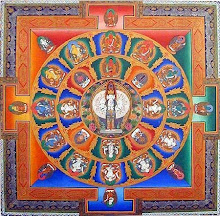




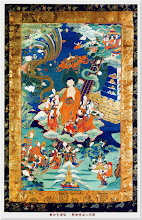

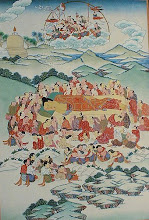


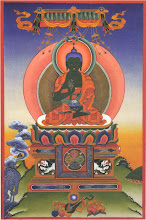




.jpg)

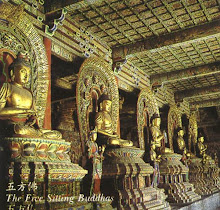













No comments:
Post a Comment